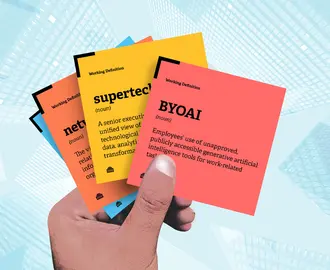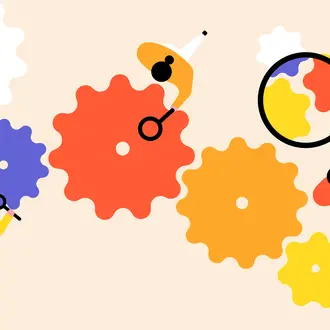Credit: Julia Kuznetsova / iStock
This Sri Lankan jewelry enterprise is a study in systems thinking
What started as a childhood hobby for Alia Whitney-Johnson has transformed into an enterprise advocating for exploited youth — and a case study in using systems thinking to launch and grow an impactful organization.
Whitney-Johnson, SB ’08, arrived in Sri Lanka as a volunteer shortly after the 2004 tsunami hit the shores of the South Asian country, killing nearly 40,000 people. (More than 225,000 people are estimated to have been killed across the region.) Amid the structural devastation, Whitney-Johnson also saw Sri Lankan teens and girls living on the streets, victims of rape and sexual abuse who’d been thrown out of their homes.
A jewelry-maker since she was a young girl, Whitney-Johnson decided to hold a jewelry workshop to better connect with the young women she met on the Sri Lankan streets. By 2008 the workshop had grown into Emerge, a nonprofit that teaches Sri Lankan girls ages 10-18 not only how to design jewelry, but how to build confidence in themselves and develop long-term life skills.
“They're very dedicated toward helping girls to get their own capital, to have their own bank accounts, to become independent in managing their own money,” said a senior lecturer at MIT Sloan, during an MIT Sloan Women’s Conference virtual series session.
Sastry admitted that she’d scoffed when Whitney-Johnson initially approached her years ago to talk about Emerge, and wondered how the idea for jewelry-making would handle a limited market and supply chain logistics.
But, Sastry said, Whitney-Johnson “went on to build an enterprise that still exists … She ran that for a while, and her presence and her shaping is very much visible there.”
To date, more than 1,100 girls have completed the Emerge programs, which now range from jewelry-making to life skills to mentorship to assistance in transitioning back into society. The jewelry sales, which contribute to the girls’ education and financial stability, total more than $125,000.
Sastry identified three steps Whitney-Johnson took in scaling Emerge that are also starting points for systems thinking:
1. State the problem
A problem statement helps sharpen your definition of the boundary around your area of concern, Sastry said. It helps you focus your work by looking at the problem instead of pitching a solution.
For Whitney-Johnson, the problem was there were young Sri Lankan mothers and girls who needed help and weren’t getting any.
“The fact no one else was serving them meant that she could try anything, she could try to build something that stood outside the system,” Sastry said. “She didn't have to work through the Sri Lankan government or propose a big thing. She just started small.”
2. Map how things are connected
Emerge runs on positive, or reinforcing, feedback. The better the experience for the girls who enroll in the enterprise, the more skills and confidence they build. They can pay those benefits forward to the next generation of young women.
“They serve as inspiring examples. They might help the organization fundraise, they might themselves become the next mentors,” Sastry said. “That's a great positive feedback loop.”
Positive, or reinforcing, feedback is one way to map how things are connected in a system. Another way is through negative, or balancing, feedback.
Think of a thermostat that adjusts the heat in your house when it’s too warm, or your mind telling you it’s time to throw away some of that clutter in your home, Sastry said. This form of feedback can be a corrective — but constructive — action, which isn’t always a bad thing.
3. Understand multipliers, lags, limiters, and accumulations
In systems thinking, it’s important to identify who or what gives you momentum and adds to your resources, and who or what slows you down or takes away resources.
Within Emerge, the girls develop skills through peer-to-peer learning and can become mentors themselves, which multiplies the knowledge leaders within the enterprise.
There’s also a “Collaborative Capital Creation” model at Emerge which allows the young women to raise their own money and manage their finances. This eliminates the worry around loan repayments as well as any financial lag on the enterprise.
Emerge also identified its limitations as an enterprise that can only provide so much help for the young women before they reenter the community. Emerge works with a local partner organization in Sri Lanka that understands the surrounding culture and needs. This creates an accumulation of long-term support for the teens and girls.
“[Emerge is] very clear: ‘We're not talking about vocational learning, we're talking about teaching you to frame and pursue your own goals,’” Sastry said.
Read next: 4 ways to boost enterprise resilience with systems thinking



